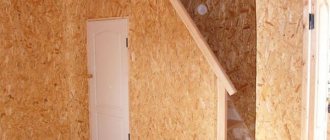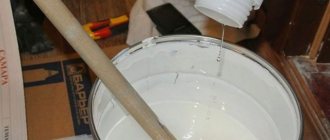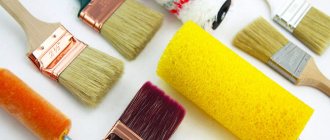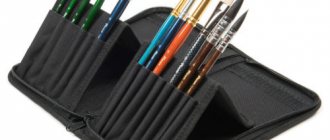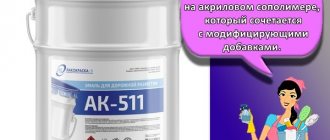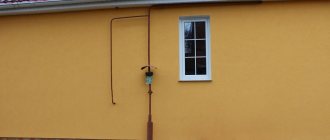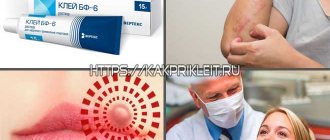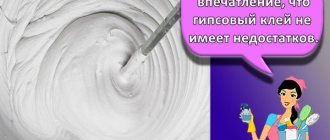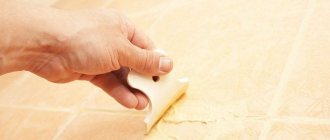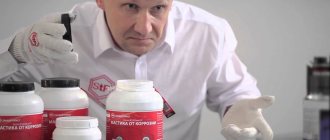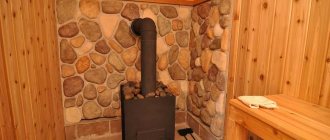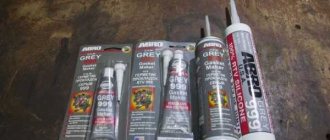In the field of construction and when carrying out repair work, along with natural materials, artificial ones are used, which contain various additives. There is a lot of discussion about the health hazards of OSB boards. There is an opinion that for safety reasons it is better not to use such finishing indoors, the material contains toxic substances.
What is OSB
Popular building materials include OSB (oriented strand boards), which are used for cladding interior spaces, as well as for creating partitions. Now such products have practically replaced plywood in the segment of wood-based building materials.
The boards consist of natural wood chips. In the process of their production, a large fraction is used, which remains as waste in the production of wood building materials.
Basically, slabs are created from coniferous wood by pressing at a temperature of 200 ºС. Special adhesives are added to small wood chips, which help to form webs of the desired parameters with different front surfaces.
Basic characteristics
OSB boards are almost 90% composed of wood chips, and the remaining 10% are waterproof components. Under the influence of high pressure, the output is a building material with a perfectly flat surface, without knots or defects. The sheets are more elastic and durable compared to regular wood.
The basic characteristics of OSB (Strand Orient Board) boards include:
- convenient sizes - from 1 to 2.8 meters in length;
- high strength;
- ease of processing;
- bending, tearing and compression rigidity;
- light weight;
- perfectly flat surface;
- noise and thermal insulation.
When completely immersed in water for a day, 6 to 25% of the material swells. When there is a difference in humidity and temperature, the coefficient of change in geometric dimensions is quite low. Such characteristics make it possible to use OSB boards in industry, but most often in construction.
Kinds
There is now a lot of debate about the health hazards of OSB boards, the technical characteristics and harmfulness of which depend on the type and composition of the products. The material is marked in the form of numbers from 1 to 4, indicating the degree of its moisture resistance, strength, as well as the number of adhesive components in the composition.
Manufacturers offer 4 types of oriented strand boards:
- OSB 1 - rather thin sheets intended for the construction of temporary structures, packaging, and the manufacture of furniture blanks;
- OSB 2 - used in interior spaces with a maximum air humidity of 60%, often used for rough work inside buildings, suitable for leveling floors, ceilings and walls, primary cladding;
- OSB 3 is a moisture-resistant material, excellent for finishing work indoors and outdoors, used as a leveling layer for finishing under plaster, brick, siding, thermal panels and other types of curtain walls;
- OSB 4 is reinforced boards with increased density for the formation of load-bearing structures; due to their high moisture resistance and strength, they are not afraid of heavy loads.
The board labeled OSB-3 is considered the most popular. It is universal, therefore suitable for most construction and finishing works.
Be vigilant when purchasing
Financial affairs have not been going well for domestic consumers lately. As a result, people try to purchase material at a low cost, but a low price may indicate poor quality of the material. It will contain formaldehyde in a significant amount, which clearly exceeds the permissible standards.
Therefore, when purchasing glued material, you should pay attention to the following characteristics:
- Presence of a pungent odor. Toxic glue gives off a sharp, unpleasant odor that goes into the nose.
- Availability of a certificate. Each seller must receive this document from the manufacturer. Sometimes the procedure may be voluntary, but a conscientious manufacturer will still provide documentation.
- Product labeling. Each sheet must be marked. For OSB boards, the technical characteristics are as follows: the indicator of harmfulness to humans is indicated at the end.
- Price. The low price of the material, as well as sale on a spontaneous market from an incomprehensible seller, will not provide any guarantees regarding quality or safety.
If something is suspicious, it is better not to purchase such material. By paying more for a quality product, the consumer protects his health. This is especially true for young children.
Actions after purchase
Lucky is the one who read the article before going to the store. These readers can think about their decision, weigh the pros and cons.
The release of formaldehyde does not continue indefinitely - eventually its concentration in the material drops to a safe level, even in material that was manufactured in violation of environmental standards. But to do this you will need to do the following:
- Ventilate the material before installation until the characteristic pungent odor disappears completely. The same must be done with the room if the installation has already been completed. Airing will take a little longer.
- The surface of the material must not be wetted with water. Because of this, formaldehyde is released more strongly - in proportion to the increase in humidity.
- The room temperature should not exceed 30 degrees.
- If clothes smell toxic, they should be washed thoroughly several times.
If you don't mind the money, you can buy an air purifier with a photocatalytic filter, or at least rent it for a week or two. Such a device is capable of neutralizing a toxic substance from the air in a short time.
To know for sure whether the installed OSB board is harmful to health, there is a proven and reliable method. You will need an aquarium with fish. It must be installed in a room with OSB material. If the concentration of formaldehyde in the air exceeds the permissible limit, then the fish will not survive.
Dieffenbachia is an indoor flower that can absorb toxic substances from the air. Its presence will help reduce the amount of formaldehyde.
Toxic components
To impart increased strength and increase moisture resistance, manufacturers use adhesives in the boards. These components release toxins that are hazardous to health into the air. However, during the manufacturing process of the material, the volume of phenols used is strictly limited. The exact quantity must be indicated on the products so that the buyer knows what type of product is safe to use indoors.
During the sheet pressing process, the following synthetic components are used that emit harmful fumes:
- phenolics;
- formaldehyde;
- methanol
In addition to the listed fumes, benzene is also present, which is a poisonous gas. Previously, ordinary PVA glue was used to glue wood chips. It is considered safe, but due to its high cost, it has ceased to be used, since the finished canvases are expensive.
Impact on the body
When exposed to intense high temperatures, OSB boards are harmful to human health. Synthetic resins begin to release toxic substances. For example, melanin is often used in glue and tannins, but its carcinogenic properties are negligible. It is dangerous only in its pure form.
Urea is used in boards to increase the adhesiveness of the material. It imparts strength in the thinnest layers of sheets.
Phenol poses an increased risk because it is very toxic to people and the environment. If the concentration is significantly exceeded, this substance penetrates the skin into the body and causes paralysis of the respiratory center.
Why are they dangerous?
Small amounts of formaldehyde are now used in various areas of production. In excess amounts upon contact with skin, it exhibits its toxic properties.
Such components are classified as allergenic, carcinogenic and mutagenic substances. They provoke the development of skin diseases and negatively affect the functioning of internal organs. The respiratory, cardiac and reproductive systems, organs of vision, and blood vessels suffer from them. Formaldehyde causes headaches and depression, and in severe poisoning, nausea and vomiting occur.
Even with short-term exposure to high concentrations of toxic substances on the human body, the respiratory system, mucous membranes, skin and nervous system are affected. If they are present in everyday life in small doses for a long time, they immediately become the cause of rhinitis, chronic bronchitis, asthma and lung problems. With prolonged contact with toxins, the risk of developing cancerous tumors in the nasopharynx increases.
Impact of modern technology
On the construction market there are OSB sheets without phenol. Manufacturers claim that they do not contain adhesives. Some factories have begun to use another polymer binder in production - methylene diphenyl diisocyanate.
Chemically unstable substances in building materials are replaced by more inert ones, as well as filler resins. The latter reduce the level of formaldehyde emissions.
Certificates and norms
The cause of dangerous diseases can be not only building materials, but also other interior items. The health hazards of OSB boards are sometimes less than those of some pieces of furniture. For this reason, it is worth conducting a full study of the indoor air and environment.
According to sanitary and hygienic standards of the Russian Federation, the maximum permissible concentration of formaldehyde is 10 ml per 100 g of dry mixture. European standards are more stringent, so their norm is 8 ml with a maximum concentration in the air of no more than 0.003 mg/m3.
For enclosed spaces it is:
- single dose for 30 minutes - 0.005 mg/m3;
- average daily - 001 mg/m3.
It is necessary to request from sellers a product certificate that contains all technical characteristics. For each batch of sheets, a conclusion or certificate is issued after passing a sanitary and hygienic examination.
Installation of OSB panels on the floor
If you are renovating on the ground floor, install waterproofing before installing the slabs. On the OSB floor, the slabs are placed on the joists. If grooves and ridges are not provided, leave the same gap between the sheets as on the walls - 3 mm. If you plan to install a floating floor, leave 1.2 cm gaps between the walls and the edges of the slabs.
Lay the chip sheets strictly perpendicular to the joists. Grooves and ridges connect the long edges of the panels, but if they are not there, use special brackets. It is best if the joints rest on additional support. The ends of the slabs are connected with joists, this is very important. Maximum permissible distance between joists:
- with a thickness of 1.5-1.8 cm - 40 cm;
- with a thickness of 1.8-2.2 cm - 50 cm;
- thicker than 2.2 cm - 60 cm.
To fasten it to the base, you can use the same nails as when attaching the slabs to the walls. The pitch of the nails remains the same - 30 cm on the joists and 15 cm at the joints.
To make the coating tougher and more reliable, you can additionally use glue when attaching the slabs to the joists. It’s even better if at the same time you additionally glue the groove joints - this way the floor surface will be more integral.
How to choose the most environmentally friendly stove
OSB facing materials are not always equipped with a quality certificate. This is due to the fact that the products offered are inexpensive. For this reason, special attention should be paid to the environmental friendliness of the product. It is advisable to visually inspect it, taking into account the emission class of formaldehyde and other toxic substances specified in the accompanying documents.
Nowadays there are facing sheets labeled “Super E”. It is an almost natural, odorless material, and its formaldehyde content is the same as in natural wood.
Manufacturer's Warranties
Over the past 20 years, manufacturers have managed to reduce the level of emissions of harmful substances in OSB boards. Experts in this field believe that in the future the percentage of toxic elements will be even lower. It is planned to improve these indicators by replacing unstable chemical synthetic resins with inert ones.
Egger conducted a computer analysis and concluded that once the adhesive is fully polymerized, no emissions are released from the finished sheets. High-precision instruments were used in the research process. However, manufacturers prefer to adhere to the strict requirements of the standard.
Recommendations
To minimize the harm of manufactured sheets, it is advisable to buy them from trusted manufacturing companies. Branded canvases are manufactured according to the European standard with markings E1 and E0. This material indicates complete safety and can be used indoors.
Boards with indices E2 and E4 are not suitable for interior decoration; they are used only for arranging structures outside the building - laying the roof or external cladding of the frame.
How to check quality
There are ways to help you identify low-quality building materials yourself. It is advisable to carry out such an examination not in a cold room, but in a warm and closed one, immediately after opening the package.
When purchasing OSB fabrics, it is advisable to pay attention to the following indicators:
- odor - toxic substances almost always emit a strong and unpleasant odor;
- certificate - bona fide manufacturers must check the quality of their products;
- marking - indicated on each sheet on the end side, where all the main indicators are indicated;
- price - a cheap product most often does not meet safety and quality requirements.
OSB material for interior work
OSB is used indoors for cladding walls, ceilings, for constructing subfloors, as a structural material in the manufacture of built-in furniture, for creating decorative elements, boxes, technological cabinets. In frame house construction, internal wall cladding with OSB increases the strength of the structure.
OSB wall cladding consists of the following stages:
- Marking.
- Lathing device.
- Laying heat and sound insulation, if provided for by the project.
- Fastening solid OSB sheets.
- Sawing OSB to size.
- Fastening the remaining sheets.
Sheathing walls with OSB boards inside and outside: sheathing for OSB, calculation and installation, how to correctly form OSB sheathing for a wall and calculate the required amount of material
But it is just possible to sheathe OSB inside the house, both external walls and internal partitions. It is even possible to attach a vapor barrier film, but not necessary. The main thing is to seal the joints of the OSB boards and all openings (sockets, switches, etc.).
Expert opinion
Strebizh Viktor Fedorovich, leading construction foreman
But OSB would just be attached from the inside of the house to the external walls, where it would serve as a vapor barrier film, as additional insulation, as additional jibs, or, if necessary, completely replacing the jibs, as is done in some countries, such as the USA . If you want to clarify something, please contact me!
Safety regulations
Despite the high class of environmental friendliness of OSB boards, formaldehyde continues to be released. However, this indicator can be minimized indoors. There are certain rules that reduce the risk of harm to health.
Experts advise not to buy furniture or building materials such as OSB, MDF, chipboard, fiberboard, artificial laminate and plywood for interior decoration.
If the house already has them, then they need to be insulated with coatings. For this use:
- paint;
- wax;
- putty;
- wallpaper;
- ceramic tiles.
Such cladding in several layers helps reduce dangerous concentrations. Particular attention is paid to the ends, since the most toxic fumes seep through them during the first time after purchase.
With increasing humidity and temperature, toxic substances are released in large volumes. For this reason, building materials made from wood chips should not be allowed to become too hot or over-moistened.
Another way to minimize the release of toxic gases is to install supply and exhaust ventilation. During normal daily operation, the system will ventilate the room well. Harmful components will not be able to accumulate inside the living space.
Final finishing
OSB style design
OSB boards for interior decoration are used both in preparatory work and for finishing decoration. Chipboard looks good in loft-style rooms. In some cases, it is possible to preserve the OSB texture on the ceiling, floor, and walls. Such interiors look very unconventional and benefit from budget renovation and originality. The texture of natural wood creates an interesting warmth effect. The premises immediately become cozy and require minimal furnishings.
Wallpapering
How to glue wallpaper on an OSB board? It's better to avoid experiments. The problem is this. In the manufacture of wood sheets, synthetic resins are used that reduce adhesion. When painting, it is enough to use a good primer; when pasting wallpaper (especially heavy ones), difficulties may arise. The most reliable option is to apply primer, a thin layer of putty, then OSM GRUND covering primer, and wallpapering. The effect may vary, and chips often peel off.
Let's give another option on how to glue wallpaper on an OSB board; or rather, we'll talk about liquid wallpaper. They are applied to a preliminary layer of quartz primer, PROFOSHEET or Tex latex putty. The surface looks beautiful, the coating lasts reliably throughout its service life.
Painting
If you are not interested in the question of how to hang wallpaper on an OSB board, we recommend finishing it with paint with mineral fillers. The resulting visual effect as a result of painting is reminiscent of decorative plaster. The compositions do not show through the OSB chip base. CERESIT CT-50 (white, requires coloring, specially designed for OSB), Green line VD-Klasik 2, KOLORIT FAMILY (PREMIUM 3) are suitable for these purposes.
